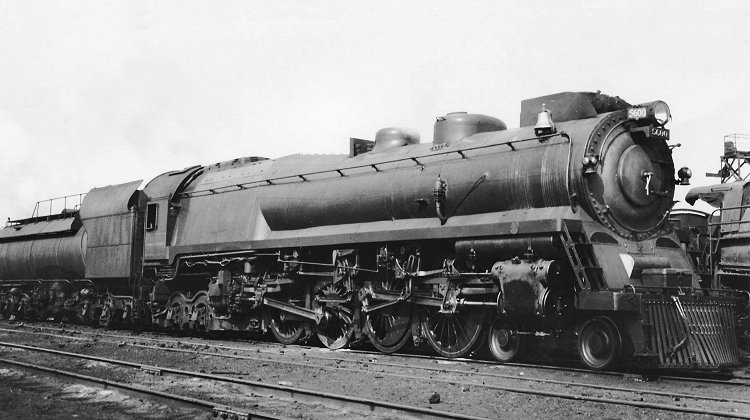In 1937 the B&O's Mount Clare Shops erected duplex-drive 4-4-4-4 No. 5600, classed N-1 and named the George H. Emerson after the railroad's chief of motive power and equipment who had spearheaded its design and construction. In this unusual arrangement the cylinders operating the second set of drivers faced "backwards," with their valve gears offset toward the front of the locomotive. This design proved problematic since the rear mechanisms tended to be damaged by grit from the roadbed and the cylinders' position next to the firebox produced extra heat affecting their lubrication. As a result the Emerson required frequent shop attention and it was withdrawn from service in 1950. However the duplex drive, which reduced the mass of reciprocating parts, anticipated the more successful Pennsylvania Railroad T-1 4-4-4-4s.
The Emerson weighed 391,550 pounds and produced 67,219 pounds of tractive effort. Its boiler sustained 350 p.s.i. of pressure, and the watertube firebox provided a large direct heating surface while eliminating maintenance-intensive staybolts. Driver diameter was 76 inches, and the cylinders had dimensions of 18x26½ inches — a small diameter compensated for by the fact that there were four of them. The grate area measured 80 square feet, the evaporative heating surface 4897 square feet, and the superheating surface 1312 square feet. The photo, acquired via eBay, was taken at the Jersey Central's terminal at Communipaw, New Jersey (note the CRRNJ camelback in the background) but other details are lacking.
